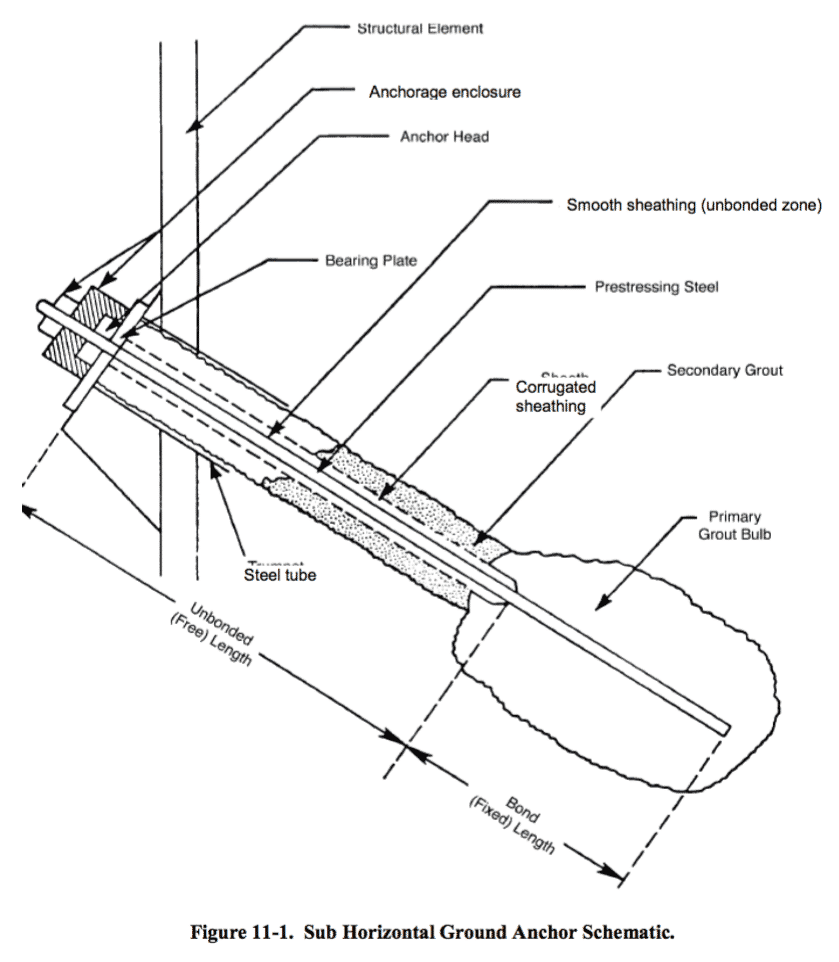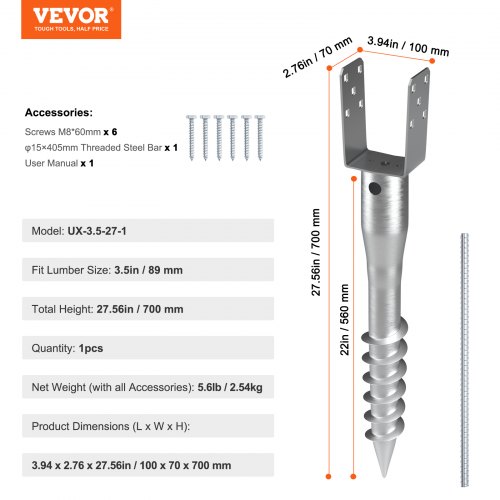Just How Heavy-Duty Earth Anchors Work: A Comprehensive Overview to Soil Anchoring Solutions
Heavy-duty Earth supports play a crucial function in offering stability and support in numerous building applications. By embedding deeply into the ground, they resist vertical and side pressures effectively. Various kinds of supports cater to numerous soil problems, making them flexible. Recognizing their mechanics and installation strategies is essential for making best use of performance. What aspects influence their performance, and exactly how do they contrast to typical approaches? The answers may stun you.
Comprehending Durable Earth Anchors
Heavy-duty Earth anchors function as necessary parts in various building and construction and landscape design jobs, supplying stability and assistance in challenging dirt problems. These supports function by being embedded into the ground, where they withstand side and vertical pressures. Their layout enables for secure attachment to structures, ensuring they stay secured against dirt motion or exterior loads.The efficiency of durable Earth supports largely depends upon the kind of soil and the support's installation depth. Correct installation techniques are crucial, as they identify the support's holding capability. Ecological variables, such as moisture and freeze-thaw cycles, can also impact performance.These anchors are regularly made use of in applications varying from safeguarding fences and retaining wall surfaces to supporting temporary frameworks during damaging weather. Understanding the concepts behind durable Earth anchors is crucial for professionals seeking to enhance the sturdiness and security of their jobs.
Sorts Of Heavy-Duty Earth Anchors
Numerous types of durable Earth supports are designed to meet details needs based on dirt conditions and job demands. Helical supports, featuring screw-like blades, work in softer dirts, using high load abilities and simple installment. Driven anchors, which are hammered right into the ground, appropriate for rocky surfaces and offer instant load assistance. Tie-back anchors are generally utilized in keeping wall surface applications, permitting lateral support by anchoring right into the ground at an angle. Another kind is the cast-in-place support, suitable for concrete applications, as they are incorporated into structures for improved stability. Lastly, soil screw anchors are versatile alternatives that can be made use of in various dirt kinds, supplying trustworthy stress and compression capacities. Each type serves distinct applications, making certain security and safety in building and landscaping jobs. Understanding these alternatives permits notified choices in choosing the proper Earth securing option.
The Mechanics of Soil Anchoring

Recognizing the auto mechanics of soil anchoring needs an assessment of different kinds of Earth anchors and their installment methods. Each anchor type provides unique qualities that affect its effectiveness in various dirt problems. Correct setup methods are important for making best use of the anchoring system's security and efficiency.
Sorts Of Earth Anchors
Earth supports, crucial elements in dirt anchoring systems, been available in several kinds, each designed for specific applications and soil conditions. The most typical kinds include screw supports, which are twisted right into the ground, providing solid side resistance. Helical anchors include blades that permit effective installation in various soil types, making them suitable for both temporary and permanent applications. Driven supports, typically made from steel, are hammered right into the dirt and are effective in dense or rough environments. Auger anchors use a helical style to help with setup in softer dirts. Lastly, plate anchors include a flat plate buried flat, dispersing lots over a bigger location, ideal for applications requiring high tons capacities in natural soils.
Installment Strategies Described
Proper setup methods are crucial for the effectiveness of dirt anchoring systems. The process normally starts with site evaluation, verifying the chosen place can sustain the anchor's tons. After figuring out the appropriate support type, proper hole depth and angle need to be established. The installment involves driving the anchor right into the ground using customized equipment, such as manual or hydraulic chauffeurs, to achieve finest embedment. Post-installation, tensioning the support is important to guarantee stability; this is usually verified with tons testing. Additionally, bordering dirt conditions should be kept an eye on to stop displacement. Adhering to these techniques not only boosts the support's efficiency yet likewise prolongs its lifespan, offering dependable support for different applications.
Applications of Heavy-Duty Earth Anchors
While durable Earth anchors are typically connected with building and landscape design, their convenience expands to a variety of applications across various sectors. In civil design, they give vital assistance for preserving wall surfaces, making certain stability in areas susceptible to dirt disintegration. The aquatic field uses these supports for protecting anchors and marinas, avoiding movement triggered by tides and currents. In addition, in the telecommunications market, heavy-duty Earth supports are considerable for supporting cell towers and other tall structures versus wind pressures. Agricultural applications additionally benefit, as these supports can secure frameworks like greenhouses and animals secure fencing, ensuring they withstand extreme climate problems. In addition, in sustainable power projects, such as wind farms, Earth supports play a crucial function in safeguarding turbine structures, improving total safety and performance. This broad array of applications highlights the flexibility and integrity of durable view it Earth anchors across various fields.
Advantages Over Conventional Anchoring Methods
Although traditional anchoring approaches have actually long been trusted for security, durable Earth supports supply significant benefits that improve efficiency and effectiveness. One significant benefit is their premium load-bearing capacity, which allows them to withstand better forces without failing. This strength makes them optimal for requiring applications, such as in construction and utility installations.Additionally, durable Earth supports are made for much deeper installation, supplying greater stability in different dirt conditions, consisting of sandy or loose soils. Their resistance to rust and environmental variables ensures a much longer life expectancy and reduced upkeep costs contrasted to traditional methods.Moreover, these supports can be mounted with very little disruption to the surrounding area, preserving the stability of the landscape. On the whole, durable Earth anchors present a reputable and reliable remedy for anchoring requirements, surpassing the constraints often connected with standard anchoring techniques.
Installation Refine and Best Practices
The installation procedure for soil securing services starts with comprehensive preparation and site analysis to guarantee peak efficiency. Following this, a detailed setup index guide provides clear guidelines for reliable application (Manta Ray anchors). Abiding by these best techniques is essential for achieving dependable and long-lasting anchoring outcomes
Prep Work and Site Assessment
Efficient preparation and detailed website evaluation are essential actions in the setup of dirt securing remedies. Before installment, the soil type should be analyzed to determine its bearing capability and viability for anchoring. Performing a geotechnical study can provide go to this web-site essential information concerning dirt make-up, moisture levels, and potential ground motion. Additionally, recognizing existing frameworks, greenery, and energies is vital to avoid disturbance during setup. The location should be free from particles and obstacles to ensure risk-free gain access to for tools. Weather condition conditions need to also be monitored, as unfavorable conditions can impact both safety and security and installation efficiency. By thoroughly preparing the website and examining all pertinent factors, the possibility of successful anchor performance is considerably enhanced.
Step-by-Step Installation Guide
A detailed installment process is crucial for accomplishing optimal efficiency of dirt securing remedies. The installation begins with selecting the suitable support kind and guaranteeing the website is free from debris. Next off, proper hole placement is determined based upon tons demands. When the place is developed, holes are pierced to the defined deepness and size utilizing the appropriate devices. The anchor is after that placed right into the opening, making certain it is aligned properly. After safeguarding the support, soil is backfilled and compressed to enhance stability. It is necessary to adhere to maker standards throughout the procedure. A post-installation inspection verifies that the anchors are appropriately positioned and operating as planned, providing trusted assistance for the designated application.

Maintenance and Evaluation of Earth Anchors
Normal maintenance and examination of Earth anchors are important for ensuring long-term performance and stability. Regular checks enable the early discovery of issues such as corrosion, loosening up, or dirt motion. Assessors must try to find indicators of corrosion or destruction on the anchor components, specifically at the link factors. Additionally, the bordering soil ought to be examined for erosion or changes in dampness web content, which can influence anchor effectiveness.It is a good idea to develop a regular evaluation schedule, ideally at least yearly, depending on ecological conditions. During inspections, all noticeable elements need to be cleaned to remove dust or particles that could hide possible problems. Any kind of indicators of distress, such as tilting frameworks or unusual settling, should prompt instant analysis. Appropriate documentation of assessments can help in monitoring anchor performance gradually and facilitate timely maintenance actions, guaranteeing the supports remain useful and dependable.
Frequently Asked Questions
What Products Are Heavy-Duty Earth Anchors Commonly Made From?
Durable Earth anchors are normally constructed from resilient materials such as galvanized steel or stainless steel, ensuring strength and resistance to deterioration. These materials offer long-lasting support and security in numerous soil conditions and applications.
Just How Do Dirt Problems Influence Anchor Efficiency?
Soil problems substantially influence anchor efficiency. Elements such as soil type, dampness material, and compaction affect the support's hold and security, with natural dirts commonly supplying far better resistance than sandy or loose dirts, influencing general efficiency.
Can Heavy-Duty Earth Anchors Be Recycled After Removal?
Heavy-duty Earth supports can be recycled after removal, supplied they are checked for damages and wear. Appropriate cleaning and upkeep improve their durability, making sure efficient performance in subsequent setups when problems enable risk-free reinstallation.
What Are the Environmental Effects of Using Earth Anchors?
The ecological influences of using Earth supports consist of possible dirt disruption, disruption of neighborhood environments, and possible contamination of groundwater. Nonetheless, if utilized sensibly, their benefits typically outweigh these problems, advertising security in different applications.
Just how Do I Choose the Right Anchor for My Project?
